Starting a print-on-demand (POD) business can feel overwhelming, but it’s more accessible than you might think. The beauty of the POD model is that it significantly reduces the financial risk and upfront costs typically associated with e-commerce. You can indeed get a fully functional, profitable store up and running with little to no money.
In this article, I’m going over how you can set up a shop that you can advertise. Whether that is on YouTube your website or other social media platforms.
What is YouTube’s Shopping eligibility?
Hey, want to get your merch on YouTube? Here’s the deal on what it takes to unlock YouTube Shopping.
First, you need to be in the YouTube Partner Program (YPP). This is a must. To get in, you need to hit one of these two goals:
- For regular videos: Get at least 500 subscribers and 3,000 valid watch hours over the last year.
- For Shorts: Get at least 500 subscribers and 3 million public Shorts views in the last 90 days.
On top of that, your channel can’t be set to “Made for Kids,” and you need to be in good standing with YouTube—that means no active Community Guidelines strikes.
Once you meet those requirements, you can start selling your stuff right on your channel. This opens up the merch shelf, and adding cards to your videos. IF you’re not in the YPP yet, you can still add a link to your store in your video’s description and comments. More ways you can monetize your channel without being a YouTube partner can be found here.
Step 1: Find Your Niche
Finding a great niche is the most important step in building a successful print-on-demand store. A niche is simply a small, specific group of people who are passionate about something. Instead of trying to sell generic designs to everyone, you’ll create products that speak directly to a dedicated audience. This could be anything from a hobby to a job or even a specific kind of humor. The more specific you are, the better. For example, instead of just “cat lovers,” think about “cat lovers who are also introverts” or “veterinarians who own cats.” Focusing on a niche makes it much easier to stand out and attract customers who are excited to buy from you.
How to Find Your Niche and Use It
Once you have an idea for a niche, your next step is to get to know your audience. Go where they hang out online, like Reddit forums, Facebook groups, or blogs, and see what they’re talking about. What are their inside jokes, common struggles, and shared values? Use this information to create designs and write marketing messages that feel like they were made just for them. When your products truly resonate with this specific group, they won’t just be customers—they’ll become your biggest fans. They’ll wear your merchandise with pride and help spread the word, building a loyal community around your brand.
Step 2: Designing your merchandise
In this article I’m going to assume that you already know what you want to sell so what we need to do is start getting some designs for the merchandise that you want to sell.
Employ a designer
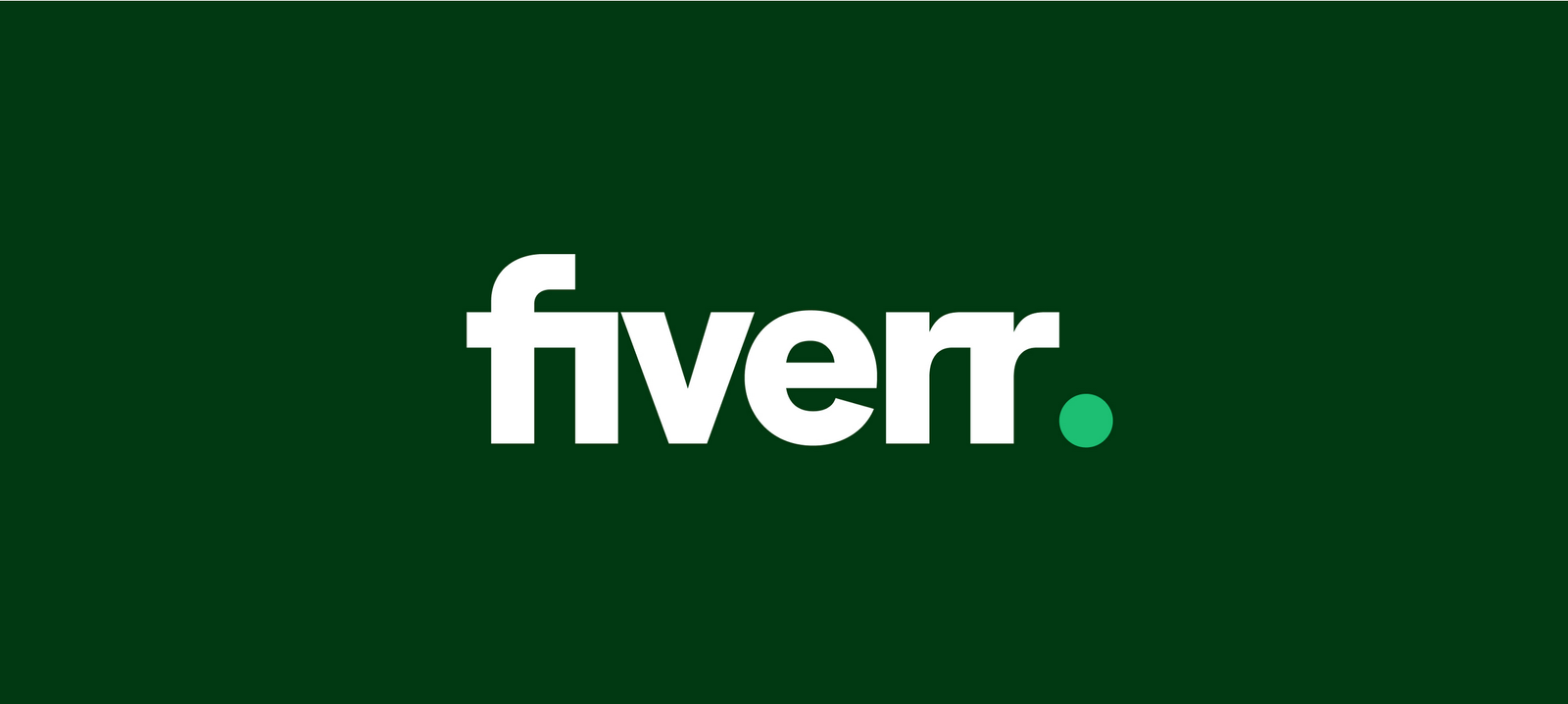
Fiverr
Now maybe you just want to find designers to do the designing part for you. Well the best bang for your buck is hiring people on fiverr.
Fiverr is a freelancer site where you can find any type of work. You tell them about your project and they will tell you how much their services are. No matter how specific your niche is—whether it’s for cat-themed t-shirts or detailed retro video game graphics—you can find a designer who specializes in that style.
You can easily filter by price, rating, and seller level to find a freelancer whose style and experience match your needs. They usually have different tiers of cost depending on what you want. So if you want something simple, it may cost like $5 to $10. If you want something that may take more time, it may go up to 30 to $40. Check it out yourself. fiverr.com.
Fiverr acts as a safe intermediary for transactions. You pay for the service upfront, but the money is held by Fiverr until the freelancer delivers the work and you’re satisfied. This protects you from losing money if a designer fails to deliver.
Additionally, every freelancer on the platform has a public profile with ratings and reviews from past clients. You can read these reviews to assess a designer’s quality, reliability, and communication before you even place an order, which greatly reduces the risk of a bad experience
Design Yourself
If you are looking to design your own merchandise you can go to a couple different websites to help you make a design online.
If you already use something like Photoshop though that might be the best option for you. You can use Unsplash & Pexels to find beautiful, free-to-use photos. Try Google Fonts & DaFont for a huge library of fonts you can use for your designs.
If not, the first place I would suggest going to is Canva.
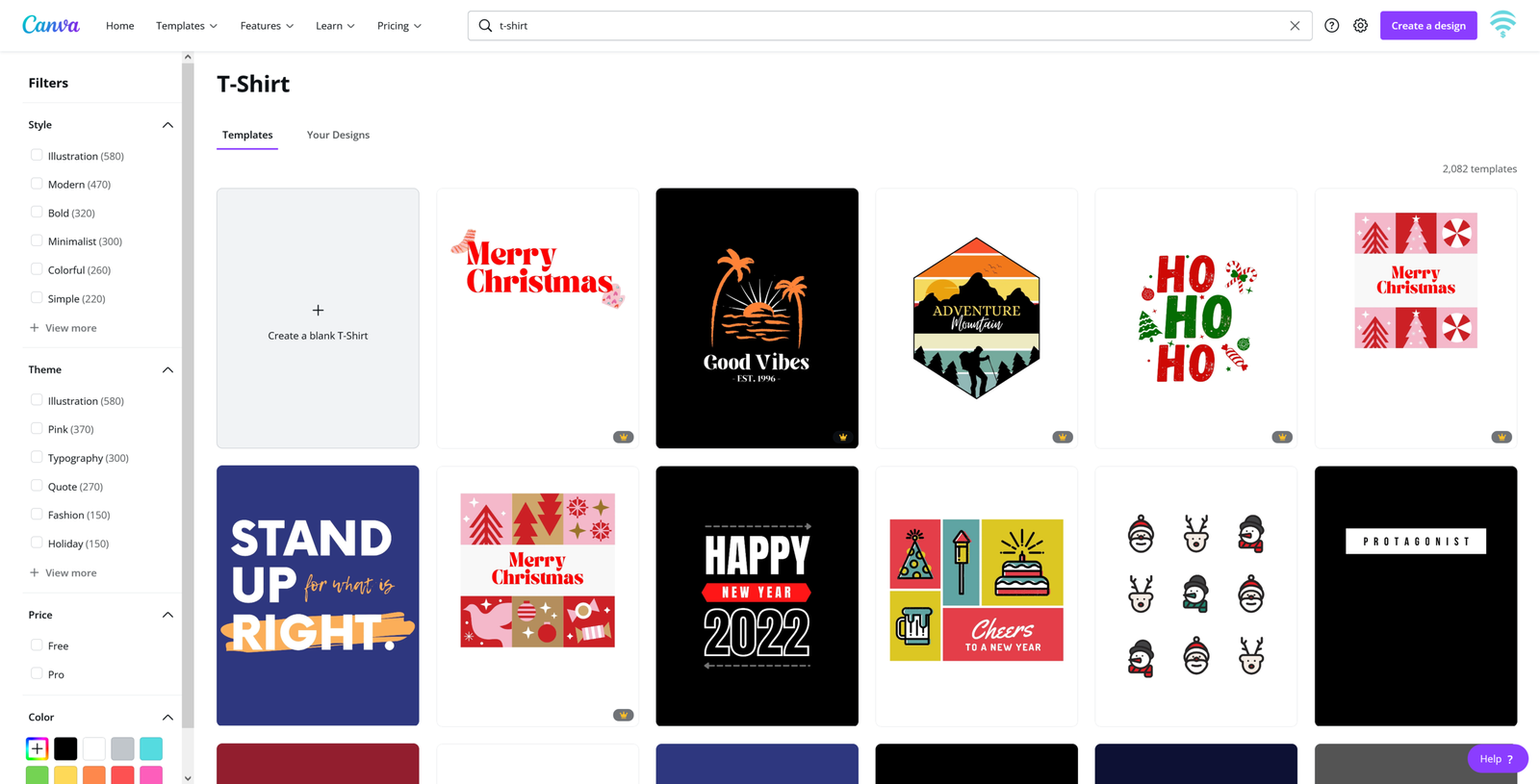
Canva
On Canva you can edit different designs four different things like thumbnails, websites, stories and merchandise.
There are a lot of free assets that you can use to create an image but you can also get a subscription to get even more assets to use to help design your merchandise.
Whatever design you build up there you will want to make sure to save it as a PNG file so it doesn’t have a background. You can check out Canva here.
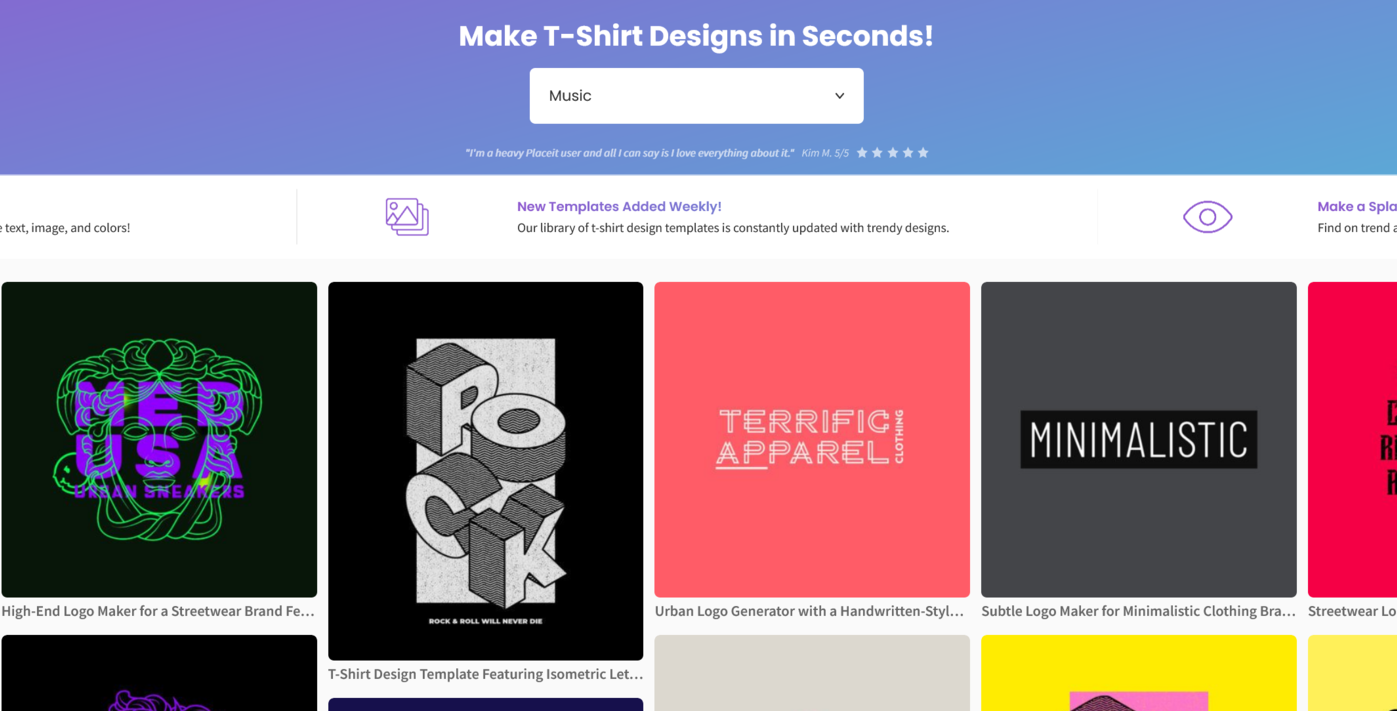
Placeit
The next website I would suggest using is called Placeit. There are a few designs that you can use for free on Placeit but you can also make and buy a single design for $3.
On the other hand you can buy a subscription for $15 a month and have unlimited access to use all of their assets and make as many designs that you want.
You can start with one of their templates and adjust to your liking. Check out some of their shirt templates here. Placeit also has more templates than for merch.
You can also find templates for social media posts, stories and more. Check my review on it here.
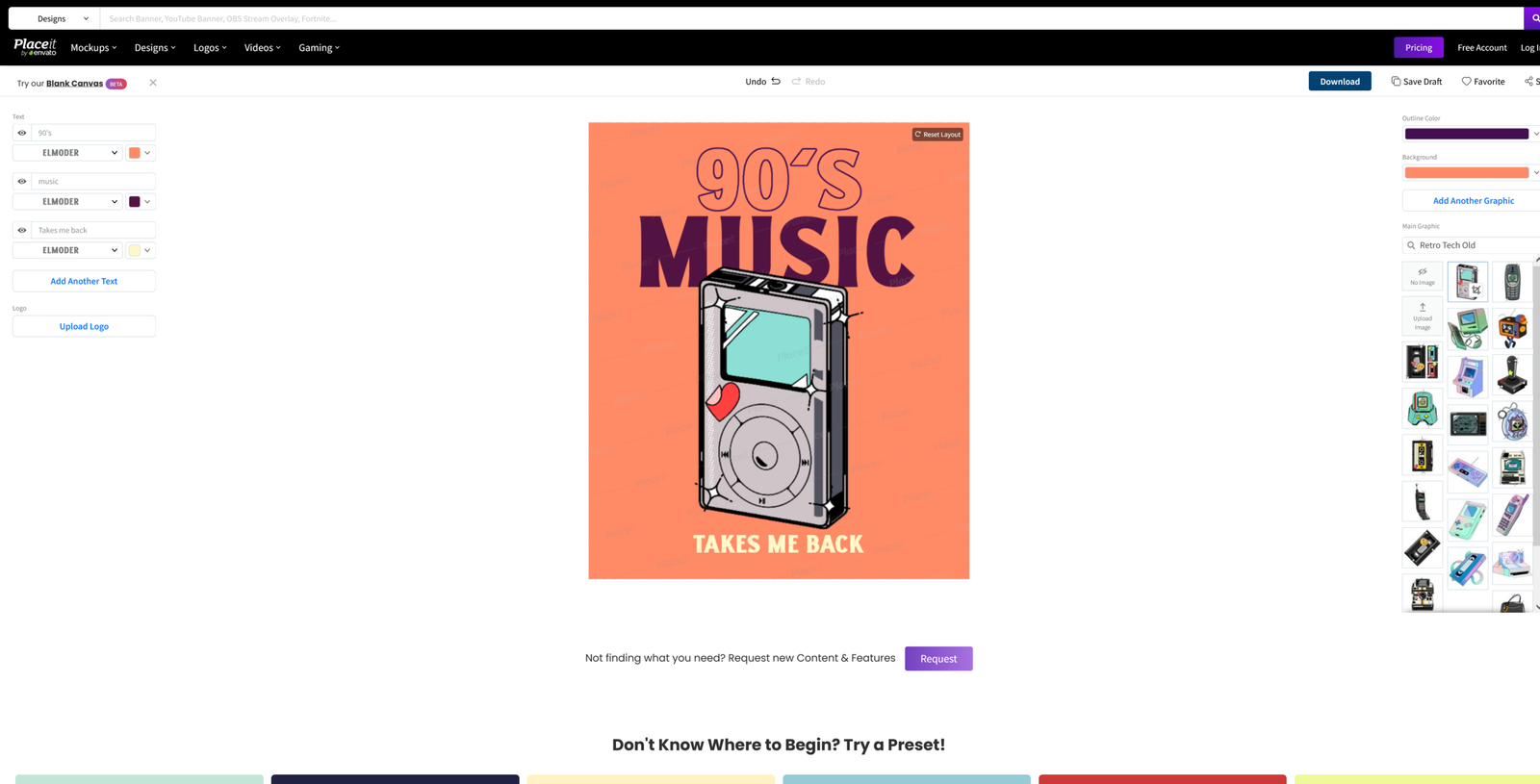
They also have mock-up images that you can upload your designs to and see how they would look on different merchandise.
Not only that but you can download the mock-up image and use the image to help promote your product.
Being able to download the mock-up images makes me lean a little more towards Placeit, but regardless both are good options.
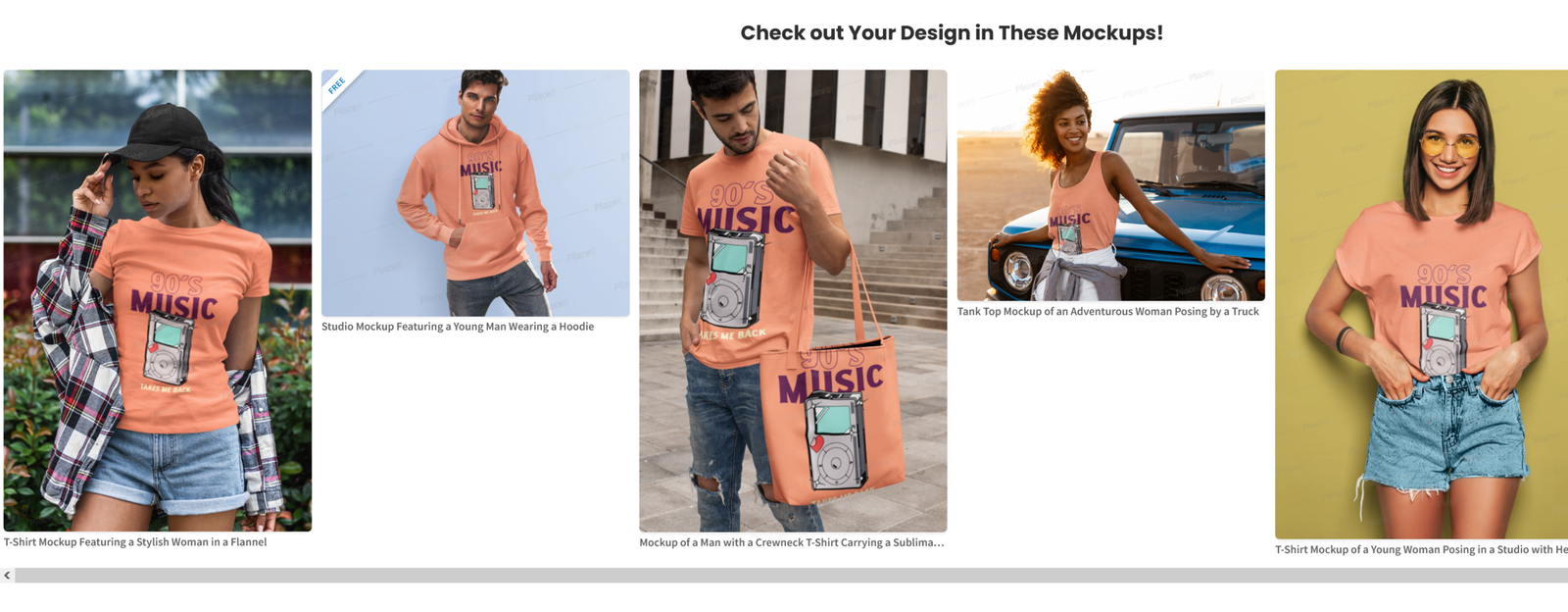
Quick Tip
When thinking about the designs for our merchandise, it’s best to do designs that parallels with what our audience knows us for.
Example, my YouTube channel is about how people can grow on YouTube so small Youtubers are the ones that’s more than likely going to look at my channel.
If I can have some type of merch that will help them with their Channel, like a subscribe shirt, my audience is more likely to buy a shirt like that from me.
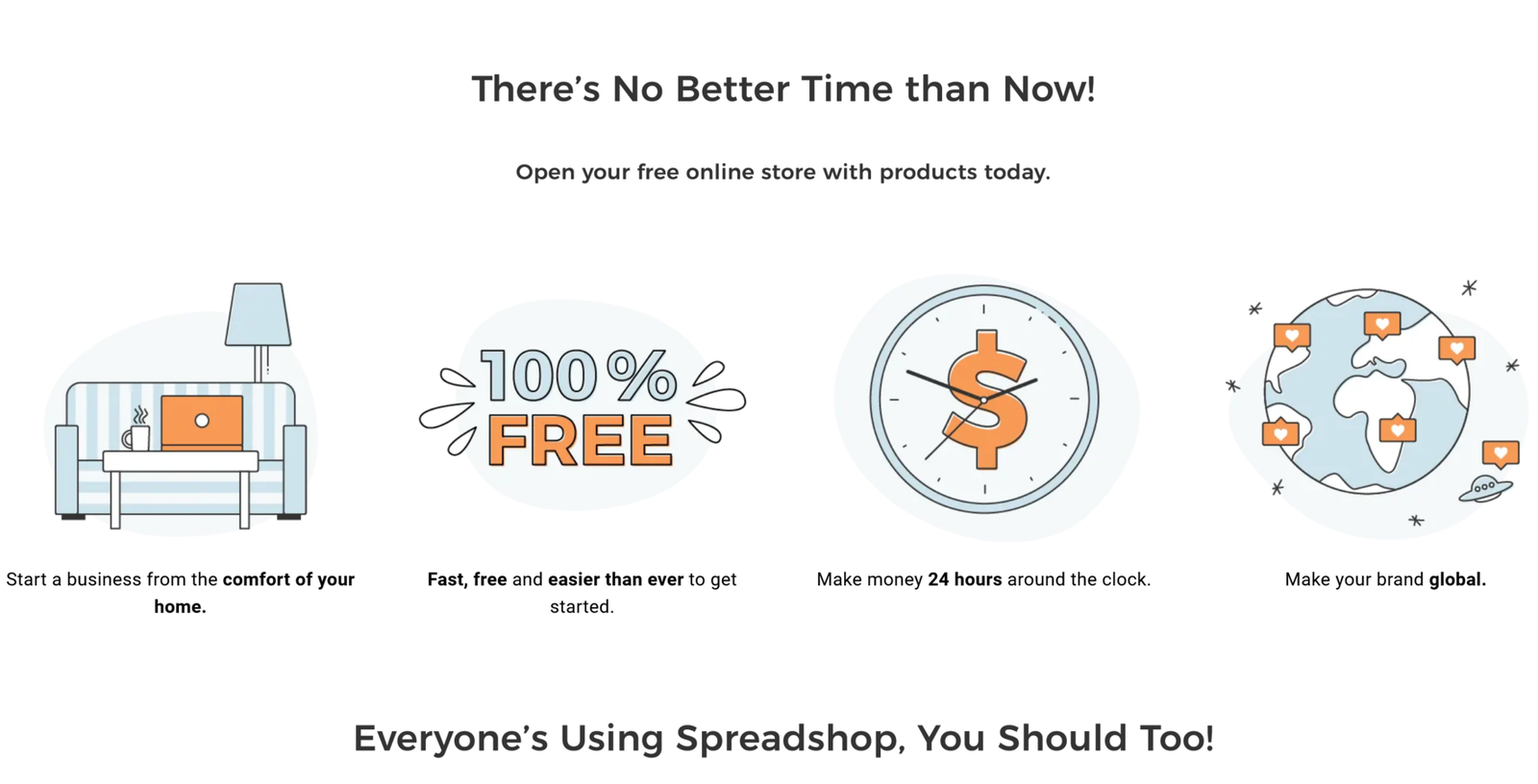
Step 3: Build your merchandise shop
When you have merchandise you’re ready to sell, it’s time to build a shop. You’ll find that there are a lot of print on demand websites that you can choose from.
There are several websites that you can set up a YouTube merchandise Shelf on your Channel with.
is the company that prints and ships your products. Signing up is free, and you only pay when a customer buys something.
- Printful: A popular choice with high-quality products. It connects seamlessly to your store.
- Printify: Offers a huge network of print providers, letting you choose the best price and location for your customers.
- Gelato: Known for its fast, international shipping thanks to a global network of printers.
You also have Spring and Spreadshop. I prefer Spreadshop but essentially they all are the same. You can sign up to make your own store for free.
The way Spreadshop gets paid is that they have a base price on every product that they sell. You would put in your margin that you want to gain from each shirt and the sum is what people with see the purchase price is for.
I’ll be doing a different article on how to set up a Spreadshop store step by step.
Set Up Your Free Online Storefront
You don’t need a paid subscription to get started.
- Shopify (Free Trial): Use their free trial (usually 14 days) to get everything set up and make your first few sales before you have to pay a dime.
- Etsy: While not technically free (it has small listing and transaction fees), it’s a fantastic place to start. Millions of people are already on Etsy looking to buy, so you get instant traffic.
- Wix or Squarespace (Free Builders): You can use their free website tiers to create a basic site to show off your products.

Step 4: How to set up the YouTube Merchandise Shelf
Once you’re eligible, you can connect your store to your YouTube channel.
- Use a supported merch retailer: YouTube has a list of approved platforms that can integrate with their system. This includes popular print-on-demand services like Bonfire, Printful, and Spreadshop, as well as e-commerce platforms like Shopify.
- Go to YouTube Studio: In your dashboard, navigate to the Monetization section and click on the Shopping tab.
- Link your store: Follow the on-screen instructions to connect your account from your chosen merch retailer. This process will sync your products with YouTube.
Manage and Promote Your Merch
After your store is connected and your products are approved by YouTube, you can start managing your Merch Shelf.
- Organize your products: In the Shopping tab, you can choose which items appear on your shelf and in what order. You can even customize the products shown for specific videos to match the content.
- Promote in your videos: Tell your viewers to check out the merch shelf below the video. This direct call-to-action is key to driving sales.
- Use Cards and End Screens: Add links to your products using YouTube’s Cards and End Screens features to guide viewers to your store.
Step 5: Promote your products on other platforms
After you set up your P.O.D. store, you got to advertise your merchandise. So how are you going to advertise your merchandise?
All of these methods are completely free.
- YouTube: Create videos showing off your products. You could do a “design with me” video or a product review of your own items. Link to your store in the video description.
- Social Media:
- TikTok & Instagram: Show your products in short, fun videos. Use popular trends and hashtags to reach a huge audience.
- Pinterest: This is a visual search engine. Create attractive “pins” of your products and link them directly to your store. People on Pinterest are often looking to buy!
- Start a Blog: If you’re passionate about your niche, write articles about it. Mention your products naturally within the content. This builds trust and authority with your audience.
- Email Marketing: Use a free service like Mailchimp to start an email list. Offer a small discount in exchange for an email address, then send subscribers updates on new products and sales.
So, other than YouTube, will you use other social media, or on your own website?
An effective way to get more eyes on your product is to use paid advertising. At the same time, you may just have to put in the sweat if you don’t have the money for advertising.
Using other platforms like Instagram to show off your merch to potential buyers as well as having your merch in your videos can really help you sell your products.
The Bottom Line:
Starting a print-on-demand store isn’t a huge financial risk. By using free tools for design, free-to-join partners for production, and free methods for marketing, you can build a successful business. Your investment isn’t money—it’s your time and creativity. And that’s all you really need to get started.
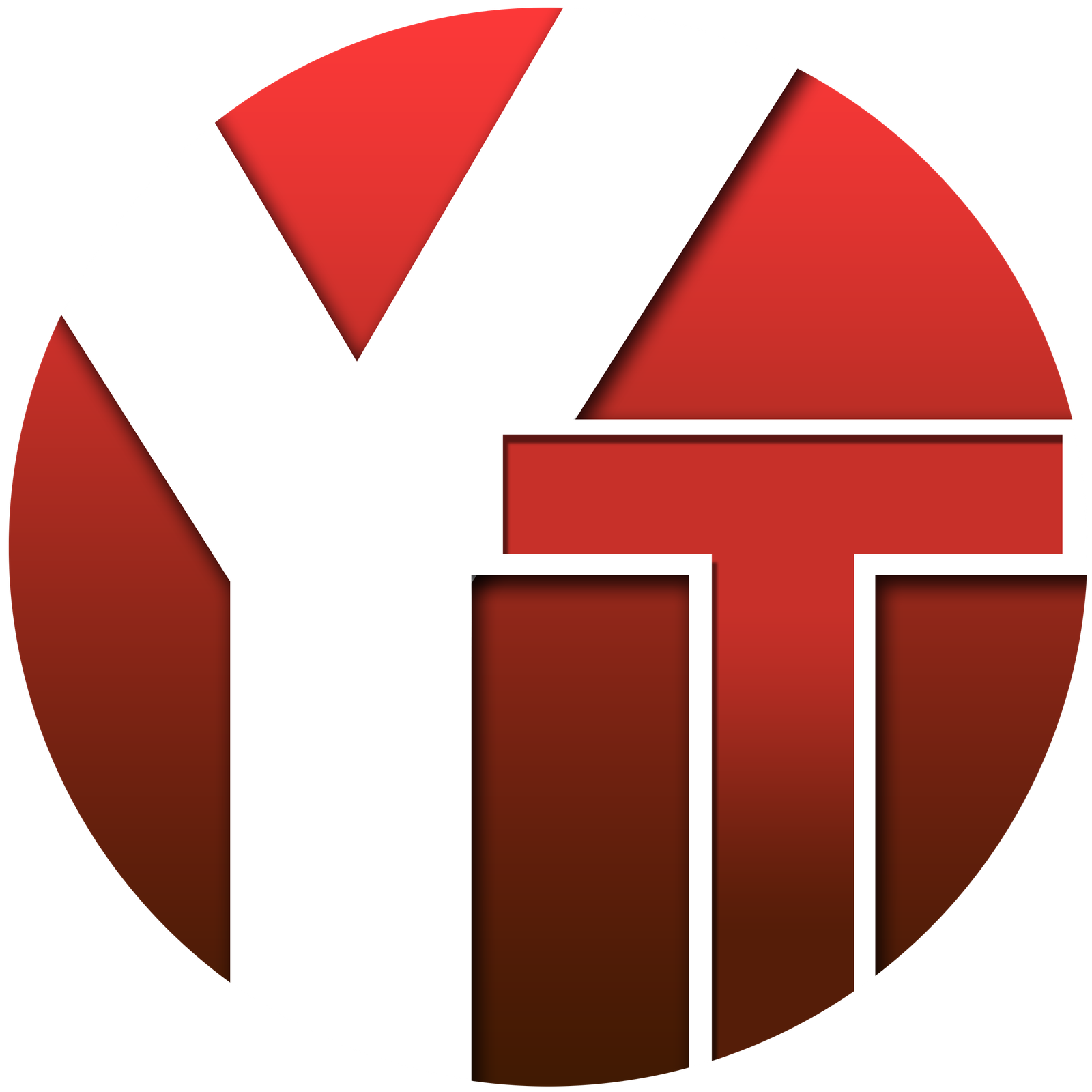
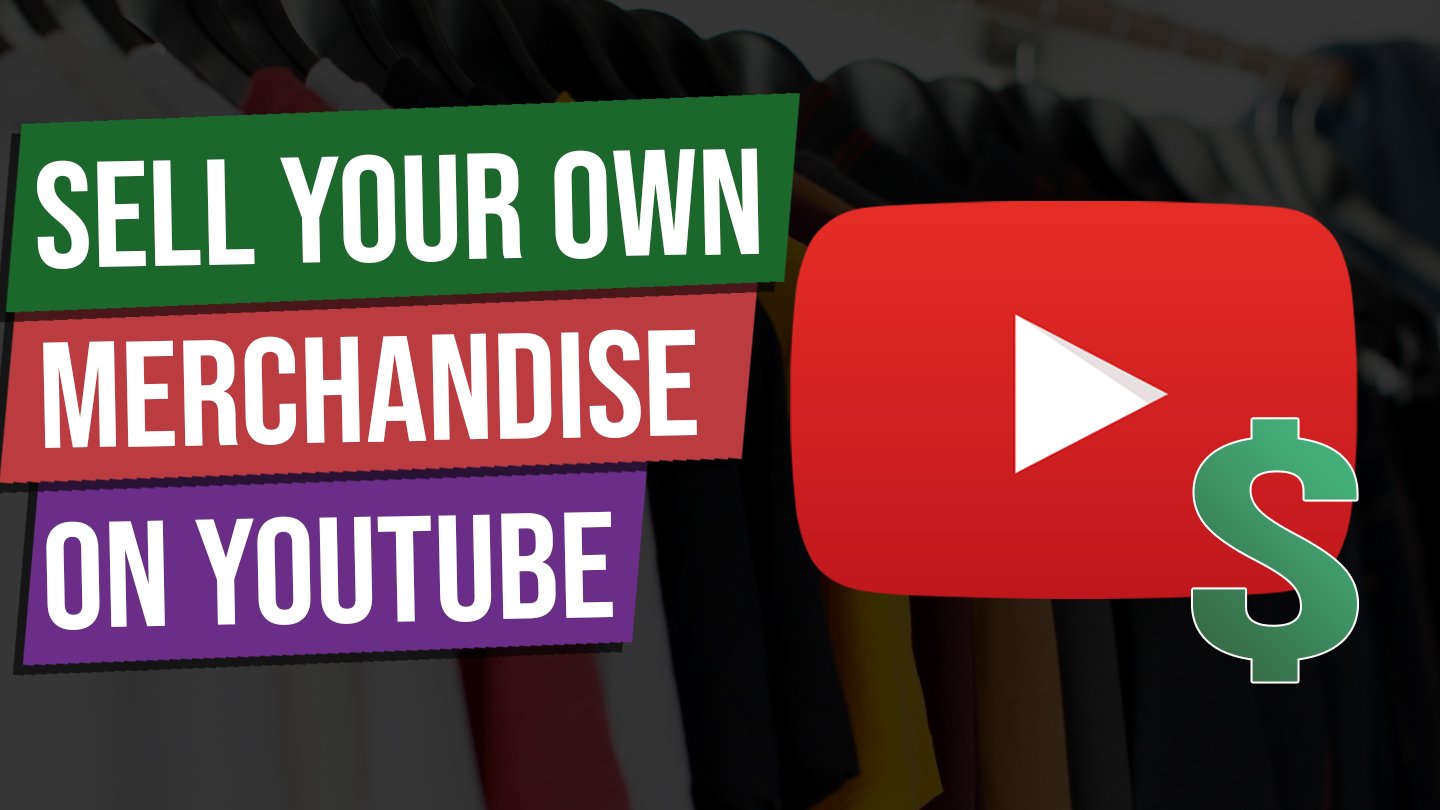
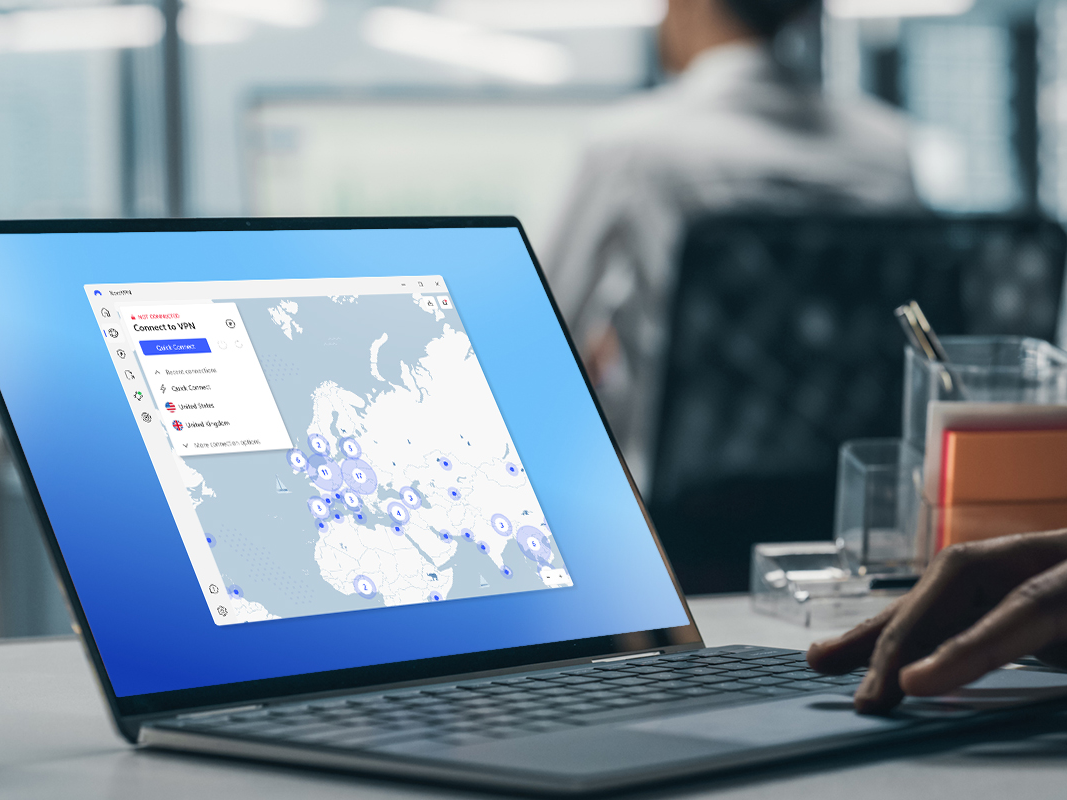
No responses yet